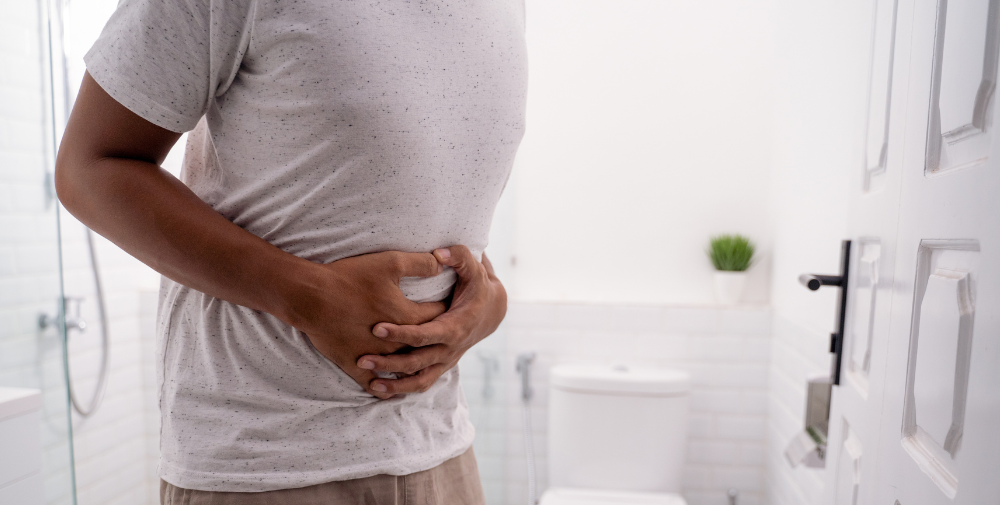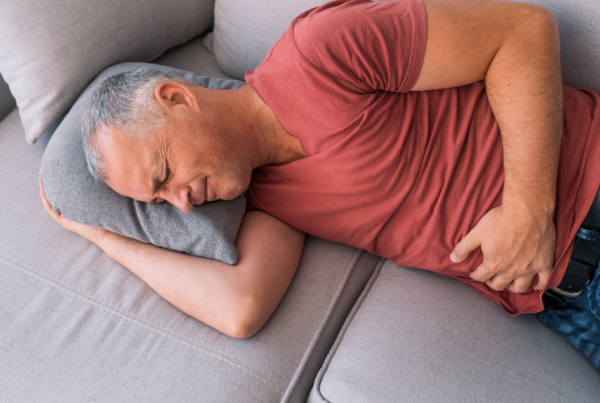Dyschezia
Move Better. Live Fuller. Your Wellness Journey Starts Here.
Schedule a FREE Discovery Call!
What Is Dyschezia?
Dyschezia is a term that refers to experiencing pain or difficulty when having a bowel movement. When specifically referring to adults, dyschezia can include symptoms of pain, obstruction, and straining (the meaning can differ when referring to infants).
Dyschezia can also refer to abdominal pain, irregular bowel movements, or incomplete emptying. It is not necessarily its own condition, but rather a general term that refers to symptoms found with a variety of conditions.

What Causes Pain With Bowel Movements?
Dyschezia or pain with bowel movements can have numerous causes, including chronic conditions or conditions created from bad bathroom habits. It may vary by the individual, but is often experienced with the following:
Constipation: Constipation can create symptoms of pain and discomfort both in the abdominal region and during bowel movements, especially with hard, dry stool.
Endometriosis: This condition can cause inflammation and very painful bowel movements, as well as other problems such as constipation, diarrhea, nausea, and more.
Anismus: Anismus is a form of pelvic floor dysfunction where the pelvic floor fails to relax for defecation, often caused by pressure—such as with chronic constipation. It can also cause blockage or obstruction, making bowel movements difficult and painful.
Inflammatory Bowel Disease (IBD): Chronic conditions such as IBD can cause discomfort and difficult bowel movements.
Anal Fissures: Tears in the rectum or anal lining can cause very painful bowel movements, discomfort, and bleeding.
Hemorrhoids: Hemorrhoids can cause painful bowel movements, especially in more severe cases.
Rectal Prolapse: With rectal prolapse, the rectum begins to protrude through the anus. This can cause discomfort during bowel movements, constipation, incomplete bowel movements, and other symptoms.
Pelvic Floor Dysfunction: With many of these conditions and general difficulties with bowel movements, the pelvic floor is almost always involved. It plays a big role in bowel movements, and so when it is too tight, too relaxed, or uncoordinated, having normal bowel movements can prove difficult.
Physical Therapy for Painful Bowel Movements
In many cases, physical therapy can be a great solution and form of support for dyschezia. For those who do not have chronic conditions, pelvic floor physical therapy can be an effective form of treatment and pain relief. For those with chronic conditions such as IBD or endometriosis, physical therapy can help make symptoms more manageable and bowel movements less painful. For either of these cases, treatment techniques can include the following:
Pelvic Floor Training: Working to improve the health of the pelvic floor by addressing problems with relaxation, contraction, and coordination of the muscles. This can involve biofeedback and other techniques to help the patient better understand and become aware of their pelvic floor muscles.
Relaxation Techniques: Physical therapists are skilled in teaching effective relaxation techniques, which can help relax the pelvic floor and allow for smoother bowel movements.
Behavioral Modifications: Certain bathroom postures or habits can worsen symptoms. Therefore, a pelvic floor therapist can teach proper postures, positioning, and other habits to make bowel movements less difficult.
Exercise Prescription: Promoting general health and regular exercise can allow for better bowel movements. Physical therapists are very skilled in creating curated exercise programs and getting patients in top shape, so this is a common factor to address during treatment.
Dietary Changes: Changes to the diet such as improving fiber and fluid intake may be necessary to support healthier bowel movements.
Treatment will vary depending on your unique symptoms, condition, and needs. Rest assured that the physical therapists at Hive Therapy and Wellness always customize your care plan to your individual needs. In order to provide a comprehensive experience during treatment, your physical therapist may use a combination of any of the following treatments:
- Neuromuscular re-education
- Manual therapy
- Exercise prescription
- Cupping
- Behavioral modifications
- Therapeutic activity
- Electrical stimulation
- Biofeedback
- Therapeutic modalities
Dyschezia is a term that refers to experiencing pain or difficulty when having a bowel movement. When specifically referring to adults, dyschezia can include symptoms of pain, obstruction, and straining (the meaning can differ when referring to infants).
Dyschezia can also refer to abdominal pain, irregular bowel movements, or incomplete emptying. It is not necessarily its own condition, but rather a general term that refers to symptoms found with a variety of conditions.
Dyschezia or pain with bowel movements can have numerous causes, including chronic conditions or conditions created from bad bathroom habits. It may vary by the individual, but is often experienced with the following:
Constipation
Constipation can create symptoms of pain and discomfort both in the abdominal region and during bowel movements, especially with hard, dry stool.
Endometriosis
This condition can cause inflammation and very painful bowel movements, as well as other problems such as constipation, diarrhea, nausea, and more.
Anismus
Anismus is a form of pelvic floor dysfunction where the pelvic floor fails to relax for defecation, often caused by pressure—such as with chronic constipation. It can also cause blockage or obstruction, making bowel movements difficult and painful.
Inflammatory Bowel Disease (IBD)
Chronic conditions such as IBD can cause discomfort and difficult bowel movements.
Anal Fissures
Tears in the rectum or anal lining can cause very painful bowel movements, discomfort, and bleeding.
Hemorrhoids
Hemorrhoids can cause painful bowel movements, especially in more severe cases.
Rectal Prolapse
With rectal prolapse, the rectum begins to protrude through the anus. This can cause discomfort during bowel movements, constipation, incomplete bowel movements, and other symptoms.
Pelvic Floor Dysfunction
With many of these conditions and general difficulties with bowel movements, the pelvic floor is almost always involved. It plays a big role in bowel movements, and so when it is too tight, too relaxed, or uncoordinated, having normal bowel movements can prove difficult.
In many cases, physical therapy can be a great solution and form of support for dyschezia. For those who do not have chronic conditions, pelvic floor physical therapy can be an effective form of treatment and pain relief.
For those with chronic conditions such as IBD or endometriosis, physical therapy can help make symptoms more manageable and bowel movements less painful. For either of these cases, treatment techniques can include the following:
Pelvic Floor Training
Working to improve the health of the pelvic floor by addressing problems with relaxation, contraction, and coordination of the muscles. This can involve biofeedback and other techniques to help the patient better understand and become aware of their pelvic floor muscles.
Relaxation Techniques
Physical therapists are skilled in teaching effective relaxation techniques, which can help relax the pelvic floor and allow for smoother bowel movements.
Behavioral Modifications
Certain bathroom postures or habits can worsen symptoms. Therefore, a pelvic floor therapist can teach proper postures, positioning, and other habits to make bowel movements less difficult.
Exercise Prescription
Promoting general health and regular exercise can allow for better bowel movements. Physical therapists are very skilled in creating curated exercise programs and getting patients in top shape, so this is a common factor to address during treatment.
Dietary Changes
Changes to the diet such as improving fiber and fluid intake may be necessary to support healthier bowel movements.
Treatment will vary depending on your unique symptoms, condition, and needs. Rest assured that the physical therapists at Hive Therapy and Wellness always customize your care plan to your individual needs.
In order to provide a comprehensive experience during treatment, your physical therapist may use a combination of any of the following treatments:
- Neuromuscular re-education
- Manual therapy
- Exercise prescription
- Cupping
- Behavioral modifications
- Therapeutic activity
- Electrical stimulation
- Biofeedback
- Therapeutic modalities
You can learn more about these treatments on our Treatments Page.





